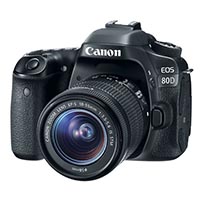 When shooting digital, always, always, set your camera to the highest level that it can record, such as “JPEG Large/Fine” or “RAW.” Then be certain that the high-resolution file that you ultimately upload to us for publicationis the high-res file that your camera recorded, not a “downsampled” compressed, or smaller-size file. Digital photos for Railpace Newsmagazine are published at 300 d.p.i. for highest quality reproduction. Photos that you see on the Web and in e-mails are usually 72 d.p.i., which is sufficient for viewing on a computer monitor. The pixel size of your digital image (width x height) determines how large it can be printed at 300 d.p.i.
When shooting digital, always, always, set your camera to the highest level that it can record, such as “JPEG Large/Fine” or “RAW.” Then be certain that the high-resolution file that you ultimately upload to us for publicationis the high-res file that your camera recorded, not a “downsampled” compressed, or smaller-size file. Digital photos for Railpace Newsmagazine are published at 300 d.p.i. for highest quality reproduction. Photos that you see on the Web and in e-mails are usually 72 d.p.i., which is sufficient for viewing on a computer monitor. The pixel size of your digital image (width x height) determines how large it can be printed at 300 d.p.i.
You can determine the pixel size (dimensions) of your digital photo in PhotoShop (and most other image editing software) under the drop down menu, IMAGE then IMAGE SIZE. Just set RESOLUTION to 300 and PhotoShop will automatically calculate the dimensions in inches that your shot can be printed. Alternatively, you can “do the math” manually, just grab a calculator and divide your camera’s maximum image pixel size by 300 and you’ll know how big (in inches) it can be printed in the magazine. For example, for an image 1048 x 760 pixels, 1048 divided by 300 = 3.5 inches wide760 divided by 300 = 2.5 inches high. This yields a rather small photo, and probably not usable in Railpace. The higher the mega pixel rating of a camera (and the higher your RESOLUTION SETTING), the larger size photo you can reproduce, either as a print, or in a magazine, or on a digital projector for a show.
In summary, to obtain the highest megapixel image, always set your camera to the highest level that it can record, such as “JPEG Large/Fine” or “RAW.” Upload your highest resolution image, not a downsampled, compressed, smaller file size. If your camera can burn the “date” into your image, make sure this is turned off/ disabled. You paid for all those expensive pixels, so use them! Remember that each time you make a change to a JPEG file and then RE-SAVE it as a JPEG, YOU LOSE SOME IMAGE QUALITY. Opening-and-RE-SAVING a JPEG file several times seriously degrades the image quality. Simply opening and closing a JPEG image just to look at it, without making any changes and re-saving it, does not harm image quality.


